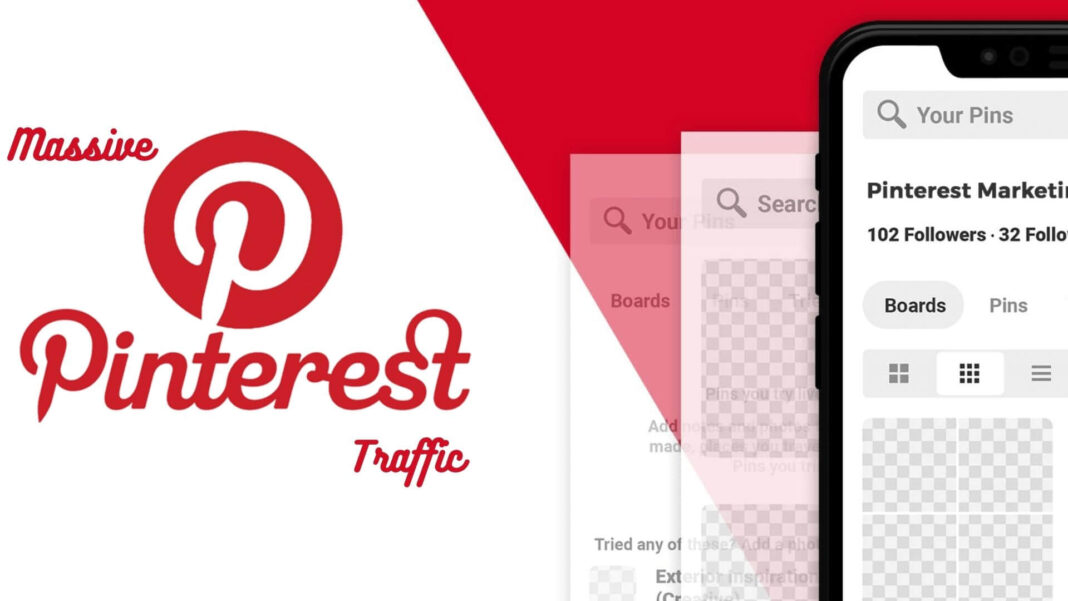Pinterest is a solid but underrated platform when it comes to driving traffic for bloggers and businesses. While Pinterest is often associated with recipe articles, DIY guides, and travel blogs, Pinterest covers a wide range of topics and is a major driver of organic traffic across many industries.
With over 442 million monthly active users, Pinterest offers an untapped opportunity for business owners and SEO professionals who want to increase their traffic. A refreshing alternative to Google, Facebook, and Amazon, Pinterest offers plenty of room for creativity and storytelling, while also priding itself on being a unique platform where pinners can discover new ideas, businesses, and blogs.
Pinterest SEO is all about optimizing your Pinterest profile and site to drive more organic and, if you prefer, paid traffic from Pinterest. The most important difference between Pinterest SEO and Google SEO is the way to target keywords are identified and then used to optimize the profile of others.
Additionally, ranking on Pinterest is more about engagement metrics and social media advertising and marketing than backlinks and technical SEO.
Create a Professional Account:
Start by creating your Pinterest business account. If you already have a personal account, you can easily convert your personal account to a business account. This gives you access to Pinterest Analytics and Pinterest Ads Manager.
Sprinkle target keywords on your pins and boards:
Now that you have a list of potential keywords you can target on Pinterest, it’s time to sprinkle them on your Pins and Boards. Unlike SEO for Google where you have titles, a meta description, technical optimization, etc. Pinterest SEO is much simpler.
Add a call to action to your PIN:
The description of your PIN code is a summary of the content of your article. You will get people to click on your site.
Try adding a call to action like Learn more about growing your blog in this guide, Click here to sign up for my free SEO training this will encourage users to learn more and visit your website.
Your CTA statement shows your article’s value proposition.:
Prepare your site. As with much social media advertising and marketing, you can use data from your site to create more targeted Pinterest campaigns. You can also direct people to your site, so it’s important to tie these two topics together. It requires a few simple but basic steps. Make sure you define all of these if you want to accurately report your Pinterest SEO efforts.
Optimize your profile:
Fill in the ‘about you’ section with relevant details and add a high-resolution company logo. This makes it easier for people to find and save your Pins. You’ll also want to optimize this section with relevant keywords more on that later.
Add Save button:
It only requires a short snippet of HTML code and allows you to extend the reach of your non-Pinterest campaigns. Once installed, users can save your site or app images to their whiteboards.
There are two options: The button can be displayed automatically or when users move the mouse cursor over the upper left portion of an image.
Set traffic and conversion goals for your business:
Keep in mind that delivery times on Pinterest can be much longer than what you’re used to on Google or Facebook. However, Pinterest still shows that they are an effective tool for lead generation.
To see success on this platform, you first need to determine what Pinterest means to your business and set appropriate goals. Once you’ve determined that Pinterest is the place for you, you can use the Pinterest tag to create a variety of conversion events on your site.
Pinterest has a pretty in-depth guide to creating conversion campaigns to help generate leads. You can collect a significant amount of data just by tracking your traffic numbers and seeing what is already working for your profile.
Do keyword research:
While you may not be able to use your usual Pinterest SEO keyword research tools, there is still a lot of validity to doing keyword research on Pinterest.
As a search engine, Pinterest manages its feed ” based on what a user is looking for and how those key phrases are used in Pins shared by content creators. These should help you find the correct keywords for your Pins and Boards.
Use guided search social media marketing services in Chicago il:
Availing guided search social media marketing services in Chicago il can be very helpful for you regarding social media rankings. This type of search on Pinterest helps people target their goals and find more relevant results. After researching your target phrase, Pinterest automatically suggests semantically related modifiers. These are a pretty good indicator of the most popular searches for any topic.
Test Sponsored Pins:
The idea here is similar to how SEO professionals use AdWords to test specific keywords to see how well they are performing before launching a full SEO campaign.
Here you can use your most effective keywords on Google and use the Sponsored Pins to see if they are successful on Pinterest.
Explore niche topics:
Fortunately, Pinterest has already categorized and broken down the topics to make it easier to find keywords for your specific niche.
Your goal should be to research all of the topics relevant to your business to see how ideas are categorized and how your competition is targeting specific keywords.
Organize and optimize tables
Your keyword and consumer survey for Pinterest should be a central consideration when you start creating whiteboards. Boards provide a great opportunity to tell Pinterest’s search engine how to rank your products and/or organize your content, which only increases visibility.
They’re also the first thing people see when they access your profile, so you want to make your table titles super clear and your images especially eye-catching.
Explore niche topics:
Fortunately, Pinterest has already categorized and broken down the topics to make it easier to find keywords for your specific niche.
Your goal should be to research all of the topics relevant to your business to see how ideas are categorized and how your competition is targeting specific keywords.























